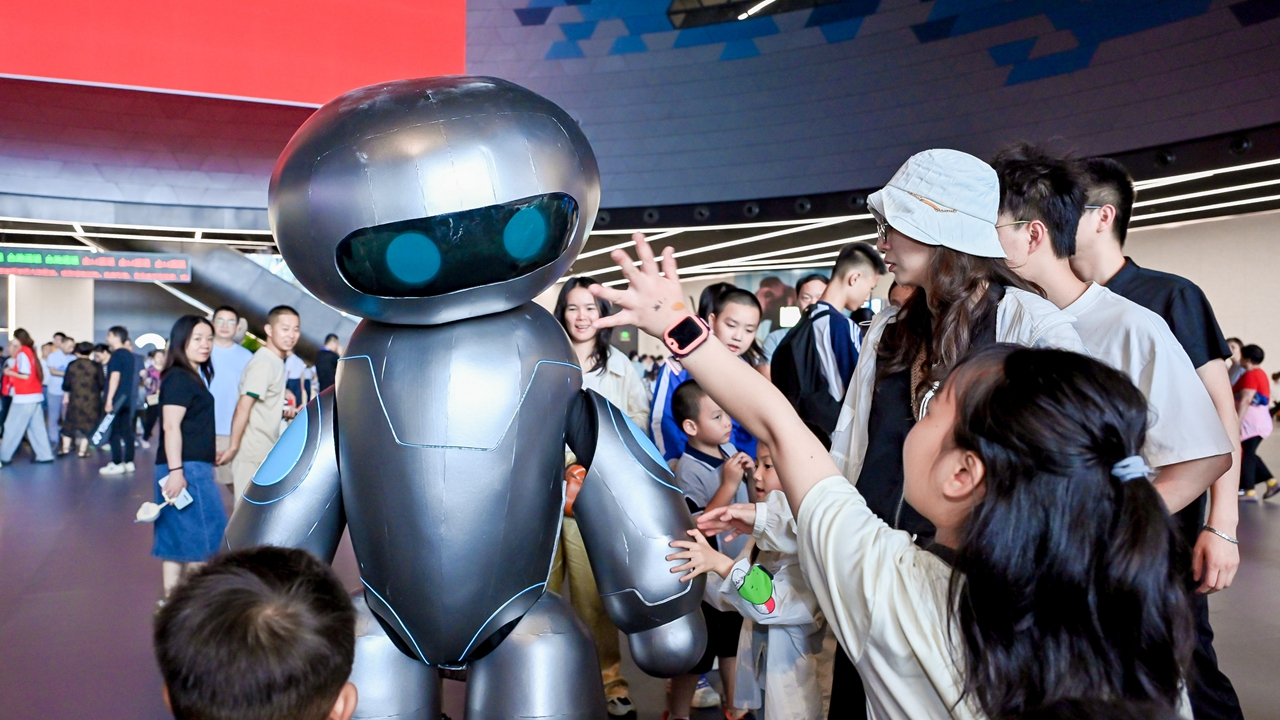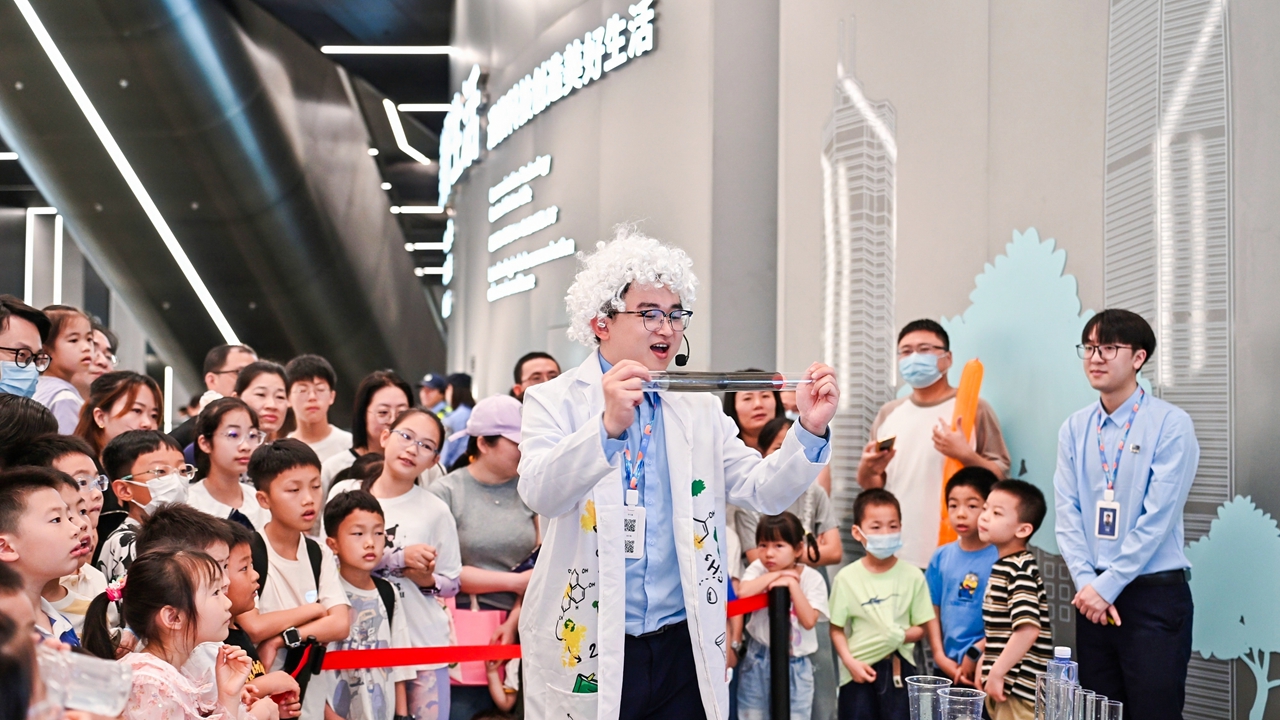SZ Science & Technology Museum welcomes 1.6m visitors in 100 days
Writer: Windy Shao | Editor: Lin Qiuying | From: Original | Updated: 2025-08-28
Shenzhen’s newest science landmark, the Shenzhen Science & Technology Museum — also known to the public as the “Big Spaceship”— has completed its first 100 days of operation with remarkable results.
Since opening on May 1, the museum in Guangming District has attracted more than 1.6 million visitors as of August 26, including over 1.09 million to its permanent exhibition halls, sources from the museum told Shenzhen Daily.
 Visitors interact with a robot at the museum. Photos courtesy of the Shenzhen Science & Technology Museum
Visitors interact with a robot at the museum. Photos courtesy of the Shenzhen Science & Technology Museum
Nearly half of the visitors came from outside Shenzhen, including Guangzhou, Hong Kong, and Beijing. “I brought my child from Hong Kong just for this,” said a visitor surnamed Lin. “It’s amazing that technology feels so close— something kids can touch, play with, and truly understand.”
During peak summer holiday periods, daily foot traffic exceeded 25,000 visitors. A visitor survey conducted by the museum also showed a service satisfaction rate of over 90%, the museum management said.
Beyond popularity, the museum has brought science to life. Over the past 100 days, it has hosted more than 2,800 science lectures, interactive experiments, and workshops, drawing 230,000 participants.
A middle school student surnamed Yang, fresh from an AI experiment, shared: “I’d only read about algorithms in textbooks before. Now I actually programmed a robot here — it finally makes sense!”

A museum staff member introduces a science exhibit to young visitors.
The museum also integrates Shenzhen’s scientific identity into its exhibits. Visitors encounter cutting-edge innovations from local institutions such as BGI, Huawei, and Peng Cheng Laboratory. “Shenzhen’s technology isn’t out of reach — it’s part of daily life, and now part of this museum,” said a visitor surnamed Zhou, an educator.
Prof. Zheng Yongchun, director of the museum, told Shenzhen Daily in an earlier interview that he is focused on embedding what he calls “Shenzhen DNA” in the new museum. “Since this is a science museum in Shenzhen, a city synonymous with innovation, it must showcase Shenzhen’s science, technology, education, and innovation,” he explained.
To achieve this, the museum features breakthroughs from local tech giants and enriches its offerings through collaborations with the city’s top universities and research institutes, ensuring visitors “experience the city’s innovative spirit.”
Zheng envisions the museum as a multidimensional hub — “a classroom for students, a showcase of tech companies, a forum for scientists, and a lifelong learning space for the public.”
Complementing the exhibitions are creative retail shops and themed dining experiences, offering everything from robotic dog models to “planet cakes,” blending fun with technology.
August 26 also marked the 45th anniversary of the founding of the Shenzhen Special Economic Zone. The new museum was featured in a commemorative program, Here, We Create Miracles, which showcased the city’s achievements and everyday life. The museum’s achievements are seen as a vivid embodiment of Shenzhen’s pioneering spirit.
The museum management will launch a series of themed events soon. For Qixi Festival (Chinese Valentine’s Day) on August 29, visitors can join activities such as AI music creation, 3D-printed roses, and a “Strongest Magpie Bridge” science challenge, blending tradition with modern technology.
In September, as Shenzhen hosts the first Guangdong edition of National Science Popularization Month, the museum will roll out exhibitions, science reading campaigns, interactive Q&A sessions, and joint open days with companies including Tencent and Huawei.